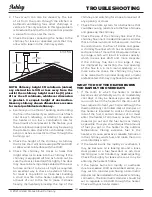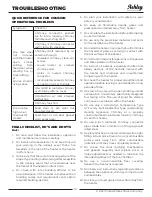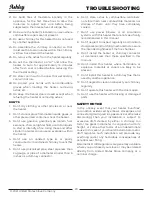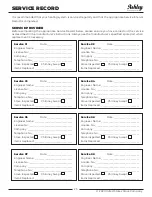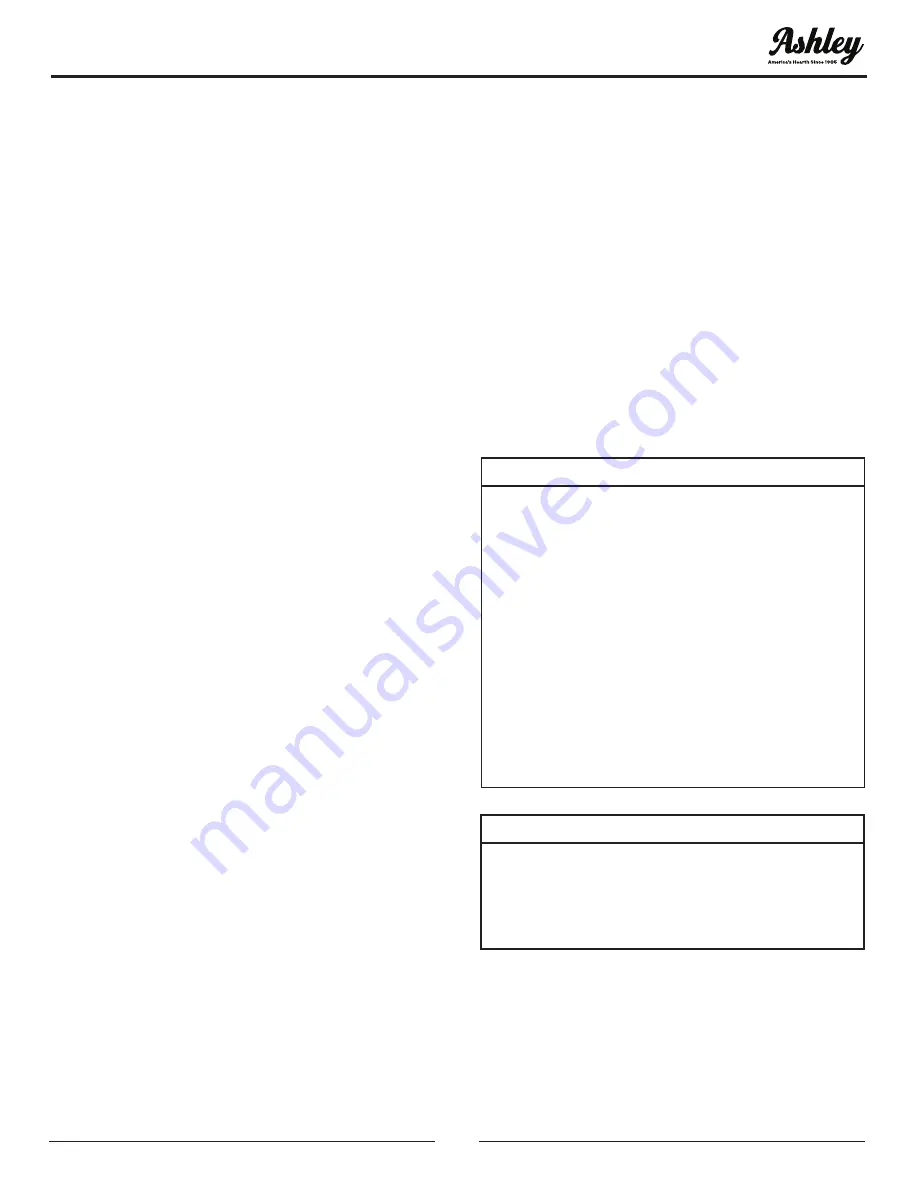
© 2021 United States Stove Company
11
to assemble the chimney connector pipes. If the
heater is to be installed to a masonry fireplace
as shown in this manual, you should also obtain
the fireplace items called for in this manual.
3. If the heater is to be installed on a combustible
floor, purchase a listed noncombustible floor
protector as described in this manual and install
it in the proper location. The floor protector
MUST protect the floor beneath and around the
heater and chimney connector as shown by in
this manual.
4. Assemble the chimney connector pipe sections
to determine if the chimney connector pipe will
correctly extend from the heater flue collar to
the chimney. Any horizontal section of chimney
connector pipe must slope upward at least 1/4”
rise to the horizontal foot to maintain adequate
draft. Always install the chimney connector
pipe with the crimped end toward the heater
to prevent creosote from leaking out of the
joints. Always use the least number of chimney
connector pipe sections possible. Minimum
clearance to combustible walls and ceilings
as noted by in this manual MUST always be
maintained if a clearance reduction system is
not installed.
5. After it is determined that the assembled
chimney connector will properly connect the
heater to the chimney, disassemble all sections
of the chimney connector in preparation for the
final assembly procedures.
6.
Place the crimped end of the first chimney
connector pipe or elbow into the heater’s flue
collar and mark it through each of the holes in
the heater’s flue collar.
7.
Remove the pipe or elbow from the flue collar
and drill 1/8 inch diameter holes at the points
marked by step 6.
8. Apply furnace cement to the inside surface of
the heater’s flue collar, reinstall the first pipe
or elbow and fasten in place with No. 8 sheet
metal screws. Apply additional furnace cement
to the outside of the chimney connector flue
collar joint if an airtight seal was not achieved
when the pipe or elbow was installed.
9. Assemble the remaining chimney connector
pipes by applying furnace cement to the joints,
drilling 1/8 inch diameter holes for and attaching
each joint with three No. 8 sheet metal screws.
Wipe all excess furnace cement from the pipe
joints with rag or paper towel. Allow the applied
cement to dry before building the first fire in
the heater.
10. Depending on your particular type of
installation, connect the heater’s chimney
connector to a masonry chimney as shown in
this manual, or connect the chimney connector
to a metal prefabricated chimney as specified
by the instructions furnished with the metal
prefabricated chimney or connect the chimney
connector to a masonry fireplace as shown in
this manual.
DANGER:
IF ANY CLEARANCE TO UNPROTECTED
WALL OR CEILING IS LESS THAN THOSE
SPECIFIED IN THIS MANUAL AFTER HEATER
INSTALLATION IS COMPLETED, A CLEARANCE
REDUCTION SYSTEM MUST BE INSTALLED
BEFORE THE FIRST FIRE IS BUILT IN THE
HEATER; OTHERWISE, THE UNPROTECTED
WALL OR CEILING COULD CATCH FIRE.
REMEMBER, THERE ARE ALSO LIMITS AS TO
HOW CLOSE THE HEATER CAN BE INSTALLED
TO A COMBUSTIBLE SURFACE PROTECTED
BY A CLEARANCE REDUCTION SYSTEM.
REREAD “MINIMUM CLEARANCES TO WALLS
AND COMBUSTIBLE WALLS AND CEILINGS”
PRESENTED EARLIER IN THIS MANUAL.
CAUTION:
FOR YOUR SAFETY, CONTACT YOUR LOCAL FIRE
DEPARTMENT, FIRE MARSHAL, OR BUILDING
CODE INSPECTOR FOR INSPECTION PRIOR TO
AND FOLLOWING CLEARANCE REDUCTION
SYSTEM AND/OR HEATER INSTALLATION.
INSTALLATION


















